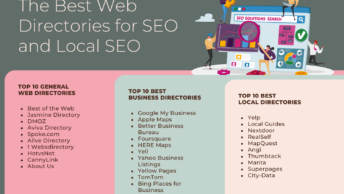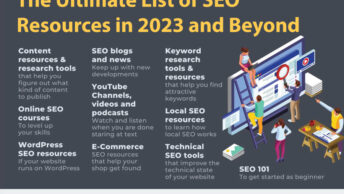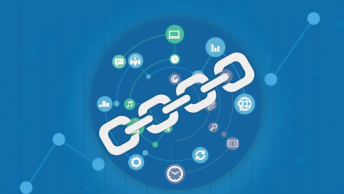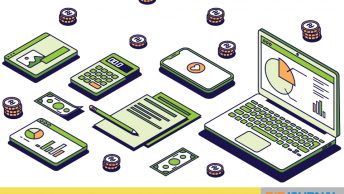Did you know that sales reps spend, on average, more than 60% of their time performing activities that are unrelated to sales? According to Salesforce Research, the preferred activity of most sales reps is relationship building, but most are too busy performing administrative tasks to engage with customers as much as they would like.
Sales tools can streamline sales processes and relieve sales reps from repetitive daily tasks, freeing up time and energy for relationship-building activities. These tools also improve efficiencies, enhance customer satisfaction and ultimately drive profitability. There are countless sales tools on the market and, as such, it can be challenging to determine which is the right choice for your organization.
The tools outlined here, if adopted and deployed properly, will drive profits for you this year.
#1: Sales and Marketing Platforms
Sales and marketing platforms enable sales and marketing professionals to stay on top of critical information related to their prospects and clients while, at the same time, generating new business. This type of software collects publicly available data about consumers and utilizes it to produce new reports and/or merge data into existing Customer Relationship Management information. The software combines internal and external data to enhance sales processes and boost sales. Data is collected from a number of online sources including news outlets, press releases, financial statements and general contact data. A comprehensive view like this can help identify new opportunities within the market and enable effective and confident decision making about strategy.
Among the top performers are Adobe Campaign, Crunchbase and DiscoverOrg in the marketing space and Lead411, LinkedIn Sales Navigator and ZoomInfo in the sales space.
Key benefits of sales and marketing platforms include:
• Identifying potential customers
• Populating lead lists and contact records using collected data
• Gathering prospect data
• Improving data quality and lead scoring
• Providing actionable insights using trajectory forecasts for prospects and industries
• Boosting overall functionality via integration with existing sales and marketing software
#2: Data Analytics and Reporting Software
A McKinsey survey of 1,000 sales organizations found that 53% of organizations considered to be “high performing” rate themselves as users of data analytics. Despite all the chatter about analytics, the same survey shows that many companies struggle to benefit from the most basic forms of analytics and some have yet to “dip their toes in the data lake at all.”
Organizations can use data analytics and reporting software to dramatically improve internal sales processes, prioritize and better understand leads, determine market trends and produce forecasting reports. Managers use analytics and reporting tools to obtain improved visibility into sales activities, highlight under-performing employees and predict future sales numbers. All of these outcomes guide sales teams toward better decision making about lead generation, people management, cross selling and pricing.
Among the top performing analytics and reporting software are Salesforce, Sisense and Alteryx.
Data analytics and reporting software provide these benefits:
• Automating data import and cleansing processes
• Visualizing sales data to simplify results and enable insightful decision making
• Revamping sales strategy
• Forecasting future sales performance to allow for a more predictable sales model
#3: Customer Relationship Management Software
Customer Relationship Management (“CRM”) software helps manage your interaction with current and potential customers. It uses data about your history with and background knowledge of the customer to improve the business relationship, thereby retaining and nurturing that relationship.
It’s not surprising that CRM was the fastest growing software market in 2019. A study by Cloudswave found that CRM software improves customer retention rate by 47% and sales conversion rates by 300%. CRM automates so many time-consuming tasks that account managers and sales reps are able to spend more time and energy focused on nurturing current relationships and closing new deals. According to an analysis done by Nucleus research, that pays off significantly; companies that use CRM software can expect a return of $8.71 for every one dollar they invest.
Some of the top performers among CRM platforms include Nextiva, Salesforce, Hubspot and ZohoCRM.
From start-ups to Fortune 500 companies, benefits from CRM software are plentiful. Every business can improve sales performance and streamline customer operations by investing in CRM software. More benefits include:
• Centralizing and standardizing customer data in one location and one format
• Tracking prospects throughout the sales cycle
• Gaining a better understanding of customer needs
• Reinforcing relationships with prospects and customers
• Automating outreach activities
• Improving interdepartmental communication and collaboration
#4: Sales Automation Tools
Now that you have your sales and marketing settled, your data analysis underway and your customer relationships running smoothly, it’s time to streamline the sales processes and ensure the most important activities receive time and energy.
Whether it’s data entry, prospecting leads, preparing for meetings or discussing performance reports, all of these processes can be standardized – or, better yet, automated. Sales automation tools give sales leaders the ability to calculate vital numbers like conversion rates, win-to-loss and speed-to-lead ratios. They can also track sales rep activities and categorize results by product, service or territory, thereby increasing department-wide productivity and efficiency.
Among top sales automation tools are Uplead, Growbots and Prospect.io.
#5: Process and Training Tools
If each of your sales reps improved win rates by 10%, how much would revenue would that total? According to CSO Insights, sales professionals who undergo training programs have 10% higher close rates.
Process and training tools help train, motivate and coach sales teams. These tools also increase collaboration across the sales organization and allow reps and managers to work together, which is particularly effective for sales calls. When implemented correctly, process and training tools also enable teams to improve onboarding and cross-collaboration, which drives win rates.
Process and training tools include: Brainshark, Lessonly and Showpad Coach.
Some key features of process and training tools include:
• Standardizing onboarding of new salespeople and ongoing training and coaching of tenured employees
• Merging CRM software to upload and store sales call information
• Archiving conversations with past prospects for sales reps to review before future sales calls
• Improving communication and approach of sales team members
• Customizing trainings and evaluations to align with sales performance tools
Willingness to Learn and Adapt will Increase Profits
Advancements to technology will continue to shift the way that sales and marketing teams do their jobs. Almost every aspect of selling has changed in recent years. But with a willingness to learn and adapt, you can easily find and use the right technology and processes to increase your sales numbers.







